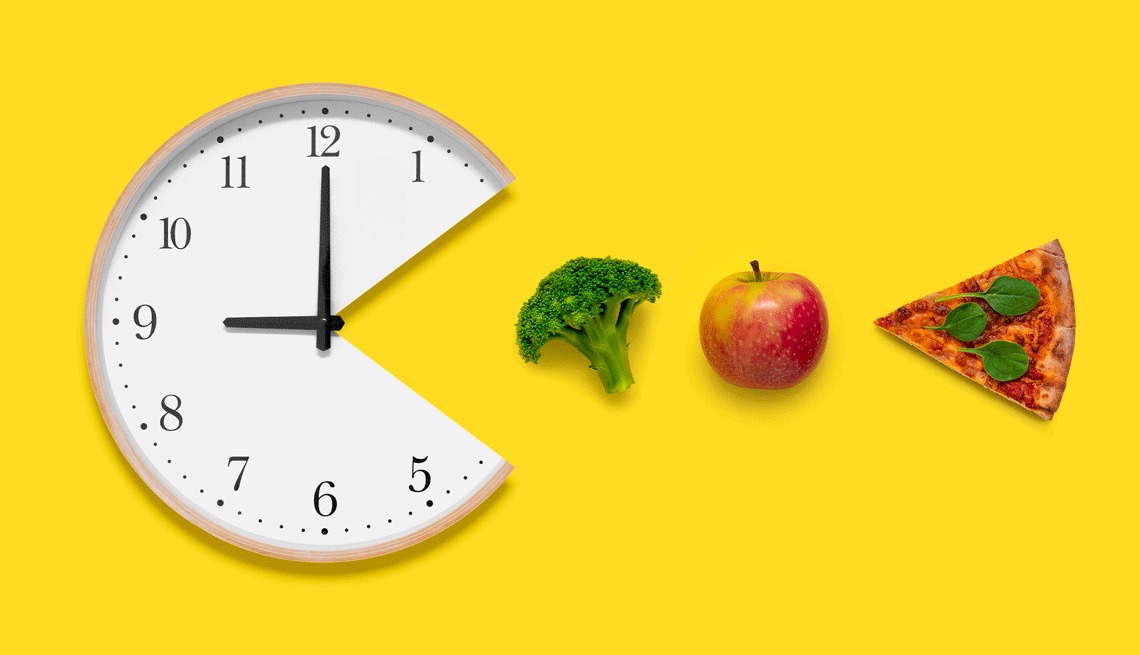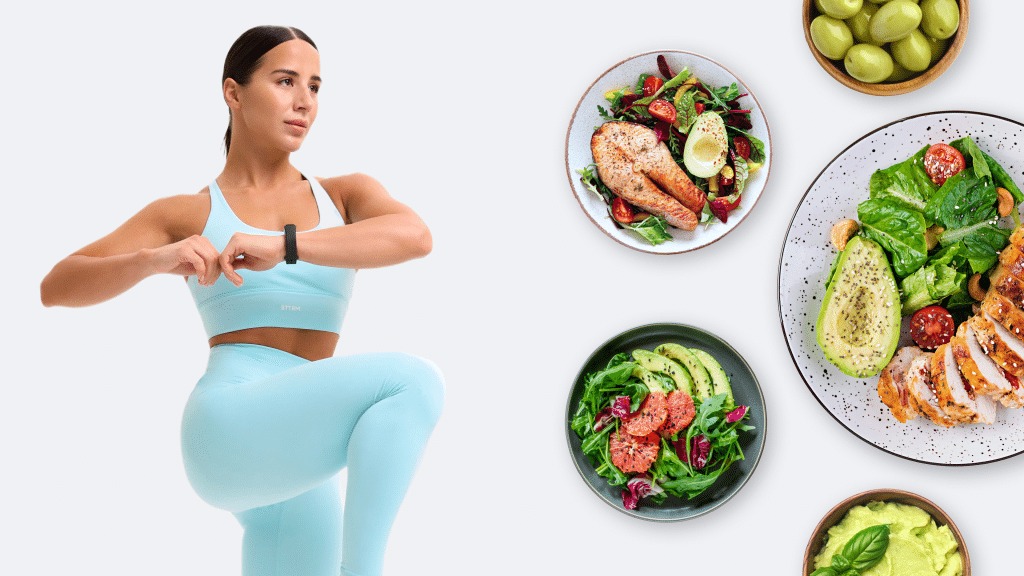Intermittent Fasting is not a diet in the traditional sense. It’s a structured eating schedule, a powerful tool that helps your body become more efficient at burning fat for energy. It’s a way of eating that has been practiced for thousands of years, and today, it has become one of the most popular methods for people who want to lose fat, get stronger, and feel more energetic. This guide will give you a complete and easy-to-follow plan for Intermittent Fasting. We’ll show you the most popular methods, the science behind why it’s so powerful, and a sample meal plan to help you get started on your journey.
What Is Intermittent Fasting? An Eating Schedule, Not a Diet
Intermittent Fasting is a pattern of eating that cycles between periods of eating and periods of fasting. It doesn’t tell you what to eat; it tells you when to eat. The idea is to give your body a break from constantly digesting food. This break allows your body to do a lot of other things, like repair itself and burn fat for energy.
Intermittent Fasting has a lot of different methods, but the most popular ones are simple to understand and to follow.
The 16/8 Method
This is the most popular and easiest method for beginners. The idea is to fast for 16 hours a day and to eat in an 8-hour window. For example, you might stop eating at 8 p.m. and not eat again until 12 p.m. the next day. This method is easy to follow because a huge part of the fasting period is while you are sleeping.
- Who It’s For: This method is great for beginners who want to lose fat, get stronger, and feel more energetic. It’s a simple and easy-to-follow plan that doesn’t require you to change what you eat, only when you eat it.
The 5:2 Method
This method is a bit more advanced. The idea is to eat normally for five days of the week and to eat very little for two days of the week. The two fasting days should not be on the same day. For example, you might fast on Monday and Thursday. On the fasting days, you should aim for about 500-600 calories.
- Who It’s For: This method is great for people who want to lose fat and who have a lot of experience with a diet. It can be a difficult method to follow for a beginner.
The Eat-Stop-Eat Method
This method is the most advanced. The idea is to fast for a full 24 hours, once or twice a week. For example, you might fast from Monday dinner to Tuesday dinner.
- Who It’s For: This method is great for advanced people who have a lot of experience with a diet. It can be a very difficult method to follow for a beginner.
The Science Behind It: Why Fasting is So Powerful
Fasting is a natural state for your body. For thousands of years, humans have fasted. The science behind why it’s so powerful is a bit complex, but here’s a simple look at it:
- It Helps with Insulin: Insulin is a hormone that your body uses to store sugar. When you are eating all the time, your insulin levels are high. But when you are fasting, your insulin levels drop, which tells your body to burn fat for energy.
- It Helps with Human Growth Hormone: When you are fasting, your body releases a huge amount of Human Growth Hormone (HGH). HGH is a hormone that helps your body to build muscle and to burn fat.
- It Helps with Cellular Repair: When you are fasting, your body is not busy digesting food. This allows your body to do a lot of other things, like repair its cells. This process is called autophagy, and it’s a great way to improve your health.
The Golden Rules of a Fasting Period
Before you even start a fasting period, there are a few important rules you need to follow to ensure you have a safe and effective plan.
1. Hydration is Key
You should drink a lot of water during your fasting period. Water can help you to feel full, and it can help to prevent headaches that can happen when you are not eating. You can also have black coffee and tea.
2. Coffee and Tea are OK
Black coffee and tea are fine to have while you are fasting. They have no calories and can help you to feel more energetic and more focused. But you should not have any sugar or cream.
3. Don’t Break Your Fast
You should not break your fast. You should stick to the schedule. If you have a meal, it will stop the process of ketosis and you will have to start over.
A Sample Meal Plan (For a 16/8 Fast)
Here is a simple and easy-to-follow meal plan for a 16/8 fast. The eating window is from 12 p.m. to 8 p.m.
Day 1: Monday
- Lunch (12 p.m.): A large salad with a lot of mixed greens, grilled chicken, cheese, and a keto-friendly dressing.
- Dinner (7 p.m.): Baked salmon with a side of roasted broccoli and cauliflower.
- Snack: A handful of almonds.
Day 2: Tuesday
- Lunch (12 p.m.): Lean ground beef stir-fry with a lot of vegetables and brown rice.
- Dinner (7 p.m.): Turkey meatballs in tomato sauce with a side of zucchini noodles.
- Snack: A handful of macadamia nuts.
Day 3: Wednesday
- Lunch (12 p.m.): Tuna salad with a side of celery sticks.
- Dinner (7 p.m.): Chicken thighs with a side of roasted asparagus and a little butter.
- Snack: A piece of cheese.
Day 4: Thursday
- Lunch (12 p.m.): A large salad with a lot of mixed greens, grilled chicken, cheese, and a keto-friendly dressing.
- Dinner (7 p.m.): Steak with a side of grilled mushrooms and onions.
- Snack: A handful of walnuts.
Day 5: Friday
- Lunch (12 p.m.): A large salad with a lot of mixed greens, grilled shrimp, and a keto-friendly dressing.
- Dinner (7 p.m.): Baked cod with a side of steamed broccoli and a little lemon juice.
- Snack: A handful of olives.
Day 6: Saturday
- Lunch (12 p.m.): A large salad with a lot of mixed greens, grilled chicken, cheese, and a keto-friendly dressing.
- Dinner (7 p.m.): Chicken burgers on a whole-grain bun with a side of a large salad.
- Snack: A handful of almonds.
Day 7: Sunday
- Lunch (12 p.m.): A large salad with a lot of mixed greens, grilled chicken, cheese, and a keto-friendly dressing.
- Dinner (7 p.m.): A large bowl of curry with a lot of chickpeas, spinach, and brown rice.
- Snack: A handful of sunflower seeds.
A New Chapter for Your Body
Intermittent Fasting isn’t a magical cure-all, but it is a powerful tool for those seeking a healthier lifestyle. This guide provides a clear and practical starting point, from understanding the science to a week-long meal plan. The key to success is not in the occasional perfect meal, but in the day-to-day choices you make and the consistency you bring to your routine. By learning to harness the power of when you eat, you’re not just changing your body—you’re changing your relationship with food and unlocking a new level of health and energy.



